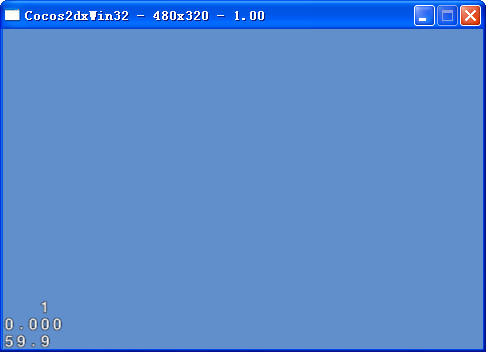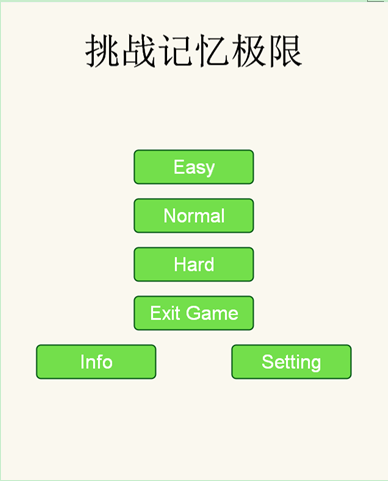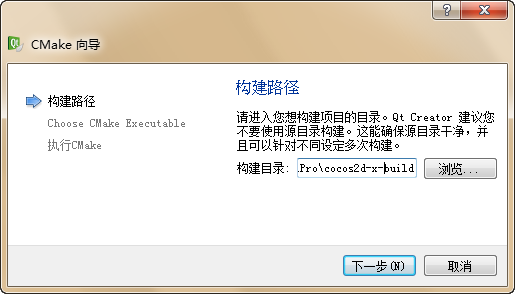
从上一篇《Cocos2d-x 2.0 在Windows平台下的使用》已经初步了解了Cocos2d-x的安装、编译,也已经可以运行HelloWorld示例了,运行HelloWorld至少所需的文件,包括:素材、动态库,我们把"...\Release.win32"里的"HelloWorld.exe"单独拷贝到一个新文件夹,至少所需的文件如下图所示:

打开cocos2d-win32.vc2008.sln,展开"HelloWorld"工程,工程结构如下所示:

对应"...\HelloWorld"文件夹的结构如下所示:

可知"Classes"放置游戏开发逻辑相关、平台无关的代码,"Resources"放置图片、声音、配置等资源,"win32"等放置平台相关的代码。
了解如何运行,在win32下就从main()函数开始,打开"main.cpp",代码如下所示:
|
1
2 3 4 5 6 7 8 9 10 11 12 13 14 15 16 17 18 19 20 21 22 23 24 |
#include
"main.h"
#include "../Classes/AppDelegate.h" #include "CCEGLView.h" USING_NS_CC; int APIENTRY _tWinMain(HINSTANCE hInstance, HINSTANCE hPrevInstance, LPTSTR lpCmdLine, int nCmdShow) { UNREFERENCED_PARAMETER(hPrevInstance); UNREFERENCED_PARAMETER(lpCmdLine); // create the application instance AppDelegate app; CCEGLView& eglView = CCEGLView::sharedOpenGLView(); eglView.setViewName( "Hello World"); eglView.setFrameSize( 480, 320); // set the design resolution screen size, if you want to use Design Resoulution scaled to current screen, please uncomment next line. // eglView.setDesignResolutionSize(480, 320); return CCApplication::sharedApplication().run(); } |
其中
AppDelegate是最主要的类,代理运行着整个应用程序,它的体系如下:

简化流程如下所示:

而CCEGLView是整个程序窗口类,游戏的显示、表现等等都在这上面进行,跟AppDelegate合起来的流程如下:

在CCApplication::run()中调用了applicationDidFinishLaunching()函数,代码如下:
|
1
2 3 4 5 6 7 8 9 10 11 12 13 14 15 16 17 18 19 20 21 22 23 |
bool AppDelegate::applicationDidFinishLaunching() {
// initialize director CCDirector *pDirector = CCDirector::sharedDirector(); pDirector->setOpenGLView(&CCEGLView::sharedOpenGLView()); // enable High Resource Mode(2x, such as iphone4) and maintains low resource on other devices. // pDirector->enableRetinaDisplay(true); // turn on display FPS pDirector->setDisplayStats( true); // set FPS. the default value is 1.0/60 if you don‘t call this pDirector->setAnimationInterval( 1. 0 / 60); // create a scene. it‘s an autorelease object CCScene *pScene = HelloWorld::scene(); // run pDirector->runWithScene(pScene); return true; } |
|
1
2 3 4 5 6 7 8 9 10 11 12 13 14 |
CCScene* HelloWorld::scene()
{ // ‘scene‘ is an autorelease object CCScene *scene = CCScene::create(); // ‘layer‘ is an autorelease object HelloWorld *layer = HelloWorld::create(); // add layer as a child to scene scene->addChild(layer); // return the scene return scene; } |
|
1
2 3 4 5 6 7 8 9 10 11 12 13 14 15 16 17 18 19 20 21 22 23 24 25 26 27 28 29 30 31 32 33 34 35 36 37 38 39 40 41 42 43 44 45 46 47 48 49 50 51 52 |
bool HelloWorld::init()
{ ////////////////////////////// // 1. super init first if ( !CCLayer::init() ) { return false; } ///////////////////////////// // 2. add a menu item with "X" image, which is clicked to quit the program // you may modify it. // add a "close" icon to exit the progress. it‘s an autorelease object CCMenuItemImage *pCloseItem = CCMenuItemImage::create( "CloseNormal.png", "CloseSelected.png", this, menu_selector(HelloWorld::menuCloseCallback) ); pCloseItem->setPosition( ccp(CCDirector::sharedDirector()->getWinSize().width - 20, 20) ); // create menu, it‘s an autorelease object CCMenu* pMenu = CCMenu::create(pCloseItem, NULL); pMenu->setPosition( CCPointZero ); this->addChild(pMenu, 1); ///////////////////////////// // 3. add your codes below... // add a label shows "Hello World" // create and initialize a label CCLabelTTF* pLabel = CCLabelTTF::create( "Hello World", "Arial", 24); // ask director the window size CCSize size = CCDirector::sharedDirector()->getWinSize(); // position the label on the center of the screen pLabel->setPosition( ccp(size.width / 2, size.height - 50) ); // add the label as a child to this layer this->addChild(pLabel, 1); // add "HelloWorld" splash screen" CCSprite* pSprite = CCSprite::create( "HelloWorld.png"); // position the sprite on the center of the screen pSprite->setPosition( ccp(size.width/ 2, size.height/ 2) ); // add the sprite as a child to this layer this->addChild(pSprite, 0); return true; } |
在这个函数里,创建了各个子元素,创建完之后,用addChild加入到主层上,上面的注释清晰的描述了步骤。
参考阅读:
1.cocos2d-x初探学习笔记(1)--HelloWorld http://www.voidcn.com/article/p-oxnsnkkz-qk.html
2.cocos2d-x之HelloWorld范例分析(一) http://www.lugw.net/?p=80005
再分享一下我老师大神的人工智能教程吧。零基础!通俗易懂!风趣幽默!还带黄段子!希望你也加入到我们人工智能的队伍中来!https://www.cnblogs.com/captainbed

 本文实践自 RayWenderlich、Ali Hafizji 的文章《...
本文实践自 RayWenderlich、Ali Hafizji 的文章《... Cocos2d-x是一款强大的基于OpenGLES的跨平台游戏开发...
Cocos2d-x是一款强大的基于OpenGLES的跨平台游戏开发... 1. 来源 QuickV3sample项目中的2048样例游戏,以及最近《...
1. 来源 QuickV3sample项目中的2048样例游戏,以及最近《... Cocos2d-x3.x已经支持使用CMake来进行构建了,这里尝试...
Cocos2d-x3.x已经支持使用CMake来进行构建了,这里尝试...